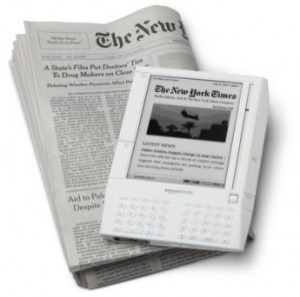 The automotive industry is a large industry where there is potential for trying improve emissions standards in the United States. The Obama Administration has committed to tougher standards than have been adopted in the past. This sector has the potential to be both economically helpful to citizens as well as lower emissions.The administration has proposed regulatory changes that would increase the prices for automobiles around $1,100 in the short term, but would improve savings by $3,000 over the life time of the automobile as is described in the New York Times article, New Standard Links Mileage and Gas Emmissions. Our economy relies on cheap fuel to help support personal automobiles and trucking of goods around the country. Because our country has already industrialized, our country should act as an example of what to do and what not to do. Countries like China will not be able to count on huge sources of natural resources as the United States did to undergo industrialization. There are now both environmental constraints and dwindling natural resources.
The automotive industry is a large industry where there is potential for trying improve emissions standards in the United States. The Obama Administration has committed to tougher standards than have been adopted in the past. This sector has the potential to be both economically helpful to citizens as well as lower emissions.The administration has proposed regulatory changes that would increase the prices for automobiles around $1,100 in the short term, but would improve savings by $3,000 over the life time of the automobile as is described in the New York Times article, New Standard Links Mileage and Gas Emmissions. Our economy relies on cheap fuel to help support personal automobiles and trucking of goods around the country. Because our country has already industrialized, our country should act as an example of what to do and what not to do. Countries like China will not be able to count on huge sources of natural resources as the United States did to undergo industrialization. There are now both environmental constraints and dwindling natural resources.
Countries like China, which are still developing transportation infrastructure would do well to set up their cities to rely more heavily on other less polluting forms of transportation like trains and learn from our mistakes. China is moving ahead with green automobile technologies, which is helping it to be a leader in the industry.
Hopefully, they will reduce the consumption of these automobiles will contribute to a cumulative reduction in green house gases. When
When comparing World emissions it can be disheartening to see that the United States has been comparatively slow to act on fuel emission standards (pictured in the graph below).
The United States may be the current world supper power right now. However, unless we improve our environmental standards significantly and become an environmental leader in the world, our country will be left behind by countries with more innovative and sustainable standards. The existing legislation is not sufficient to meet reductions goals, which are requisite for our country to stabalize at acceptable levels. This is discussed in more detail within the report How to Avoid Dangerous Climate Change: A Target for U.S. Emissions Reductions. The United States needs to take a stronger stand on fuel economy standards, because this is an important sector of our economy that can be improved. Companies like Honda and Toyota are flourishing with new more gas efficient technologies, while companies like Ford and GM are suffering from touting less gas efficient vehicles. The United States needs to have the immediate implementation of more stringent standards that are flexible, which is emphasized in the Climate Change: Current Issues and Policy Tools report to congress. The graph above indicates that the United States is already behind in emissions efficiency standards. The current bills proposed in the senate do not appear to be stringent enough. The United States needs to be role model to developing countries like China, so that their growth is more sustainable and less environmentally damaging. One hard change is fundamental changes to our whole transportation system. Biodiesel, ethanol, hydrogen fuel cells are all considerations that have should be considered. Ultimately, any solution that are considered will need to be viewed not just by a technological and economic lens, but must also be analyzed through the ecological lens for potential environmental consequences.
Tags: China, ecological lens, fuel economy, Philip Rothrock, Public Policy, US Energy Policy
For many years, I have struggled with the pressing question: how do we enact change? How do I, as an individual, assist in correcting the global climate change problem that we face? Although I hate to say it, I think policy is the most effective avenue to see the change that we want. The initiative is there with a small minority of the American population, but we need everyone on board for a problem as stark as global climate change. The vast majority of people either doesn’t understand enough or doesn’t care about climate change; because of these two factors, it is vital that we have strong policy that demands change from our country.

Good policy must encompass the three E’s: effectiveness, economic viability, and equaling/distributional effects (Leggett 2). Therefore, a number of factors must be taken into account when discerning the best way to go about tackling climate change on a national scale. There are currently many approaches to mitigating climate change. Two options for carbon reduction are widely known: reductions at point of emission or end use. Many people are proponents of one or the other, depending upon with which industry they align. My question is: why don’t we use both? Attacking emissions from both ends allows carbon reductions to come from across the board, without targeting one industry or set of businesses. If one industry is singled out and punished for either point of emission or end use, there will be powerful interests vested in combating these policy movements. For example, do not target merely the transportation industry while leaving the industrial sector untouched.
The nature of climate change necessitates integrated and multi-faceted policy approaches: the aforementioned hybrid model would be particularly helpful. We cannot expect one tactic or solution to solve all of the potential hazards associated with climate change. The problem itself is not simple; therefore, we cannot afford to go about addressing climate change in a simple manner. I propose that a holistic/multi-pronged approach as described below would lead us towards a greener future:
First, there needs to be a strict and massive transition towards the redistribution of subsidies. For example, corn is heavily subsidized; farmers are actually paid to let their fields lie fallow. Because corn is so inexpensive, the markets are skewed towards finding a use for corn in essentially everything. Allowing diversification within U.S. agriculture would promote alternatives to both fuel and U.S. exports to be more
Second, a personal carbon tax would be an interesting experimental implementation to consider that would have an equalizing distributional effect in decreasing consumer impact. France is instituting a carbon tax on personal and business use of coal, gas, and oil to reduce French energy consumption; the U.S. should learn from their model and attempt a similar project to spread awareness among consumers.

Third, provide economic incentive within industries to promote making green practices the norm. Rewarding innovation financially within industries will encourage change through promoting competition. Then mandatory environmental standards would not be necessary, hence avoiding industrial backlash.
Although not comprehensive, I believe that taking these initial steps in the marathon of our fight against climate change will get us on the correct path towards a brighter future.

Okay, so the title has absolutely nothing to do with this post other than the Professor from Columbia University is named Klaus Lachner. And Professor Lackner, if you do for whatever reason stumble upon our COP15 blog I sincerely apologize for taking your name and relating it to a certain jolly individual in the North Pole.
Yet, on the other hand, Klaus Lackner is a bit like St. Nick that is, if his idea of artificial trees ever comes to fruition. In Mann and Kump’s Dire Predictions: Understanding Global Warming, they briefly mention Lachner’s approach to carbon capture and sequestration or storage (CCS). The idea of CCS is to essentially divert CO2 emissions away from the atmosphere by “capturing” it from large emission sources such as power plants, factories and other industrial behemoths. This differs slightly from Lackner’s concept. Lachner wants to go after the CO2 that is already in the air that is being emitted by vehicles and other small producers. These small producers however, take up a good portion of emissions.

This is an artists rendering of what Lackner’s idea might look like. It is whats being called “synthetic trees”-high-tech stations with that intake air and eliminate the carbon dioxide from the air and store it as a liquid. These towers would be on top of buildings or placed near towns–one tower would facilitate a small town. The CO2 would the be buried and stored permanently underground.
Klaus’ idea is a sound one–yet one that is still tough to wrap my Mass Media Studies brain around. Essentially, instead of going right to the source of the emission–say 100-200 feet from a factory, these towers would be spread out all over the world and collect CO2 that is already in the air. If this gentleman is not going to be at the COP15 he should be, because this Carbon Capture innovation is something that could take down emissions in both developing countries and developed countries.
In interviews with the NYT and CNN Lackner claims that his synthetic trees will collect one ton of carbon dioxide per day at a low cost:
“If you were to install 10 million of them, you would pull back on the order of 3.6 gigatons of C02 a year. The world right now produces 30 gigatons of C02 a year. In 2006, the world made 73 million cars. They are comparable in size, and ultimately comparable in cost.”

Klaus also mentions in a NYT interview about using ultramafic rocks–rocks in the Sierra Nevada and Applachian that are perfect for sequestering carbon:
“My view is that ultramafic rocks can take up more C02 than we can ever make. What’s nice about it is, though, yes, you make big piles, you know it stays in there. Once you form a carbonate, it doesn’t want to go back. The biggest ultramafic deposit in the world happens to be in Oman. Those ultramafic rocks alone could take the world’s CO2. You could imagine having air collectors in the desert of Oman and putting C02 directly into mineral carbonates.”
This YouTube Video also provides a bit more insight via BBC about what Klaus’ innovation will do, the exact science behind it, and when/if we can expect to see his invention in the field so to speak.
To read more about Klaus’ endeavors read the following articles:
http://greeninc.blogs.nytimes.com/2009/07/01/scrubbing-co2-with-synthetic-trees/#more-14733
http://www.cnn.com/2009/TECH/science/06/22/synthetic.tree.climate.change.ccs/index.html?eref=rss_tech
http://www.earthinstitute.columbia.edu/articles/view/2523
http://articles.latimes.com/2008/apr/29/science/sci-carbon29
http://www.rollingstone.com/news/story/16722257/2007_hot_issue/11 –yes, this man was in Rolling Stone. However, the article is 2 years old–costs and other details are inaccurate.
And if you have time and want to watch this 78 minute lecture about it–here you are.

Tags: Carbon Sequestering, Carbon Trees, CCS, CO2 Emissions, Klaus Lachner

Industry sector accounts for the second highest contribution of greenhouse gases, just after energy sector. According to Mann and Kump, in 2004 industry sector released 19.4% of all greenhouse gas emissions. However, thanks to technology, this sector has great room for improvement in terms of environmental impact. One case in point within industry sector is the publishing industry. It is among the most drastically changed by technology in the past decade. Those changes are exciting, noticeable in everyday life and significantly reducing carbon footprint of the industry.
To start with, let’s take a word connection game. As you try to connect one word with the next, think about the climate impact of the connections: tropical forest, paper mills, printing houses, newspaper, mailboxes, trash bins. Yes, that is the typical life cycle of newspapers. You may ask what if newspapers are recycled? According to Green Press Initiative, an environmental advocate in the publishing industry, consumption of paper for newsprint is 9.2 million tons per year, of which the average amount of recycled material used is 32%. That means 6 million tons of virgin fiber is used to make newspaper in the US every year. Unfortunately, that was just the number for newspapers. Publishers also turn out magazines, books, catalogs and all kinds of other publications.
Paper is a very carbon-intensive product (life-cycle of paper below). A report by Wood Consumption suggests that production of every ton of paper requires two to four tons of trees. In fact, more than 40% of logged trees are used in paper production. The process of producing pulp and white paper also requires massive input of energy and chemicals. When not recycled, which happens to 50% of all paper, paper products end up in landfills, taking up space and producing methane.

On the bright side, recent technology has suggested ways to reduce environmental impact of the publishing industry. Most noticeably, newspapers industry has gone online. A research by Nielsen, a global market research firm, suggested that online newspapers have been growing at double-digit rates in recent years while circulation for print papers is on a constant downward trend. Philip Meyer, a researcher and writer on journalism, using current growth rates, has extrapolated that newsprint in the US will die in the first quarter of 2043. As a result, in the next few decades, the publishing industry will be able to cut back on environmental impact even more significantly.
Technology does not only affect newsprint. The recent popularity of Amazon’s Kindle, an e-book reader, together with Google Library project have suggested that in the near future, more and more books will be available in electronic form. Since its release in 2007, Kindle has constantly beaten analysts’ sales forecast. Amazon has projected to sell 500,000 units of Kindle this year. In its lifetime, each Kindle unit theoretically helps eliminate the printing of thousands of books. In terms of software and services, Google Books Library Project is working with major libraries with a goal of “creating a comprehensive, searchable, virtual card catalog of all books in all languages”. When all these projects take off, they will create a platform for further digitalization of publications. This will only further decrease our reliance on paper.

In the publishing industry, we have seen a case of technology improvement not only making reading more convenient but also effectively reducing greenhouse gases emissions. The driver behind the technology may not be the concern for the environment, yet its impact helps reduce carbon footprint. This is a very good example of an industry going green and providing more lifestyle choices at the same time.
Video on future of books: http://www.youtube.com/watch?v=K8SNrKDoTHQ
Tags: industry sector, Luan Nguyen, online newspaper, publishing, technological lens
In June of 2009 the House passed the American Clean Energy and Security Actwith a 219 to 212 vote (Leggett, Climate Change: Current Issues and Policy Tools). This act is centralized around a cap and trade system and calls for a 17% reduction of CO2 at 2005 levels by 2020 and an 83% reduction by 2050. This would require 20% of US electricity to come from alternative resources by 2020. Click Here to see Obama’s address to the passage the ACESA (American Clean Energy and Security Act).
But does this bill meet the standards for stabilization called for by the scientific community?
• The ACESA falls short of targets proposed by Luers et al in How to Avoid Dangerous Climate Change. They call for a stabilization of greenhouse gasses at 450 ppm to avoid temperatures rising 2 degrees Celsius above pre-industrial levels. At 450 ppm, there is a “medium chance,” or a 50% chance of avoiding the dangerous increases in global temperature
• Other scientists have proposed an even more strict stabilization of greenhouse gasses at 350ppm in order insure that a dangerous rise in global temperatures is avoided.
In conclusion, the ACESA falls short of what the European Union and many environmentalists have called for in greenhouse gas reduction policies.
Although the US new climate change bill may not be as strict as might be necessary in the future, at least it is a starting point. There are hopes that this bill will continue to move the US towards a more green economy and to sign the new Kyoto Protocol in Copenhagen 2009.
According to Leggett in Climate Change: Current Issues and Policy Tools, Bush’s principal arguments for not being a party to the Kyoto protocol were as follows:
1. Uncertainty of climate change science 
2. Potentially high economic costs of cutting greenhouse gas emissions
3. Lack of commitment for developing countries to cut emissions
Times have changed since the Bush era, and we have already seen evidence of this with the American Clean Energy and Security Act. Hopefully, the recognition of climate change in the House will help the US make wise decisions in Copenhagen this winter to sign onto a legally binding, international agreement to cut emissions.
Tags: cap and trade, climate change, Grace Lange, Kyoto Protocol, US Energy Policy


Your Comments